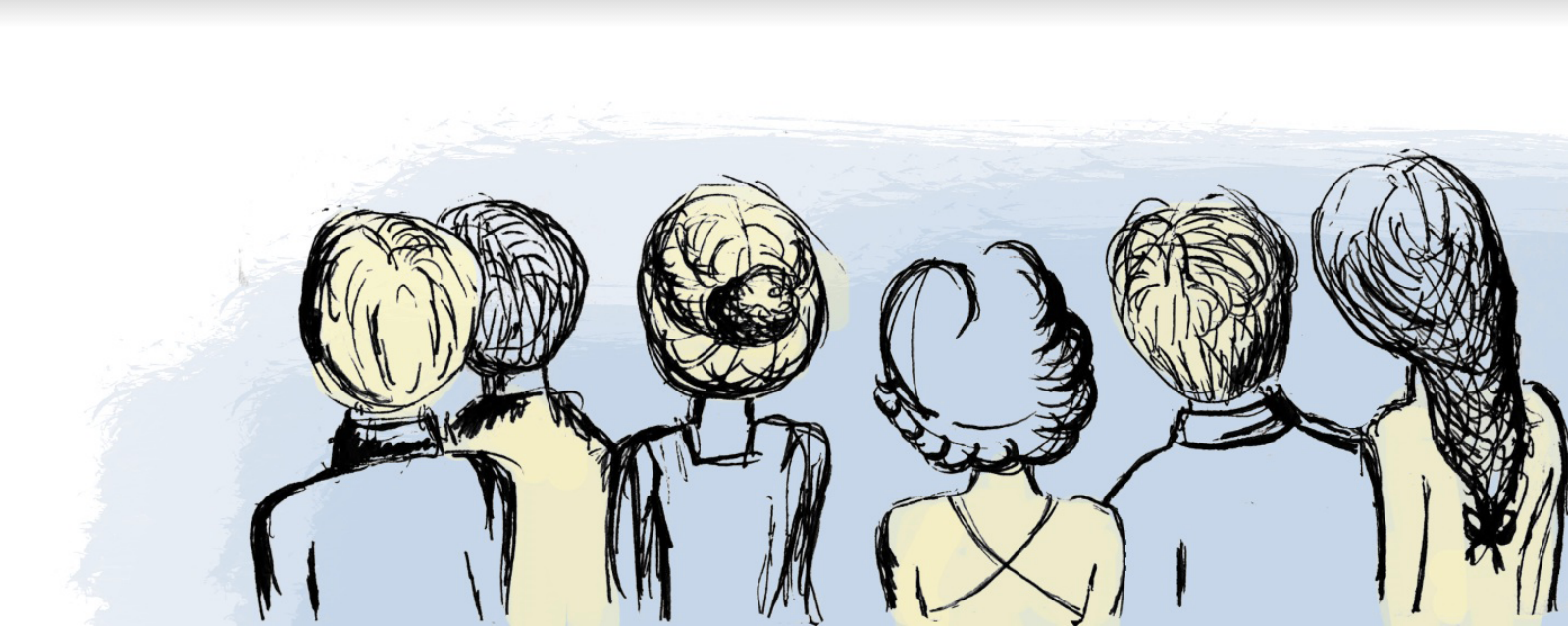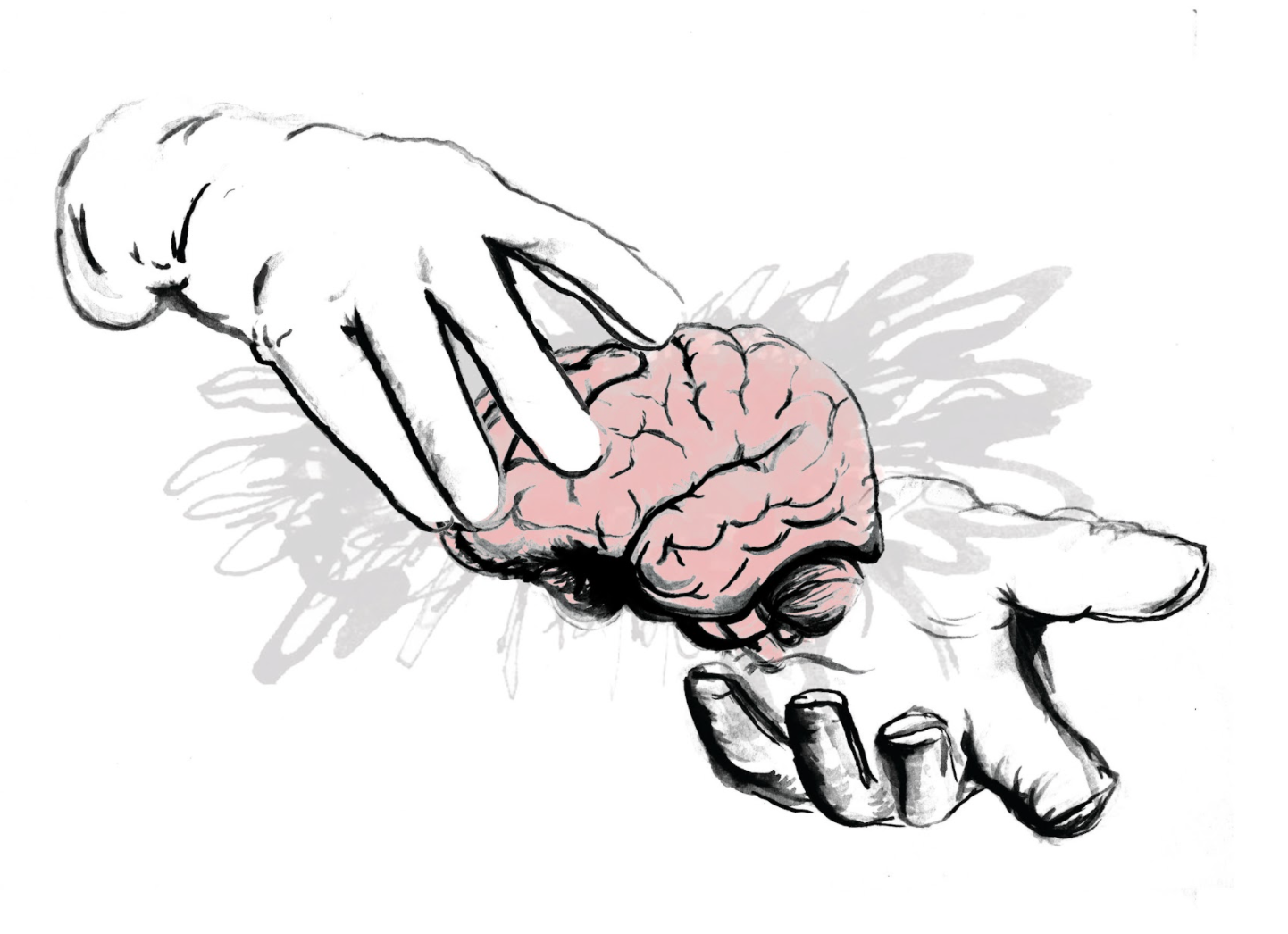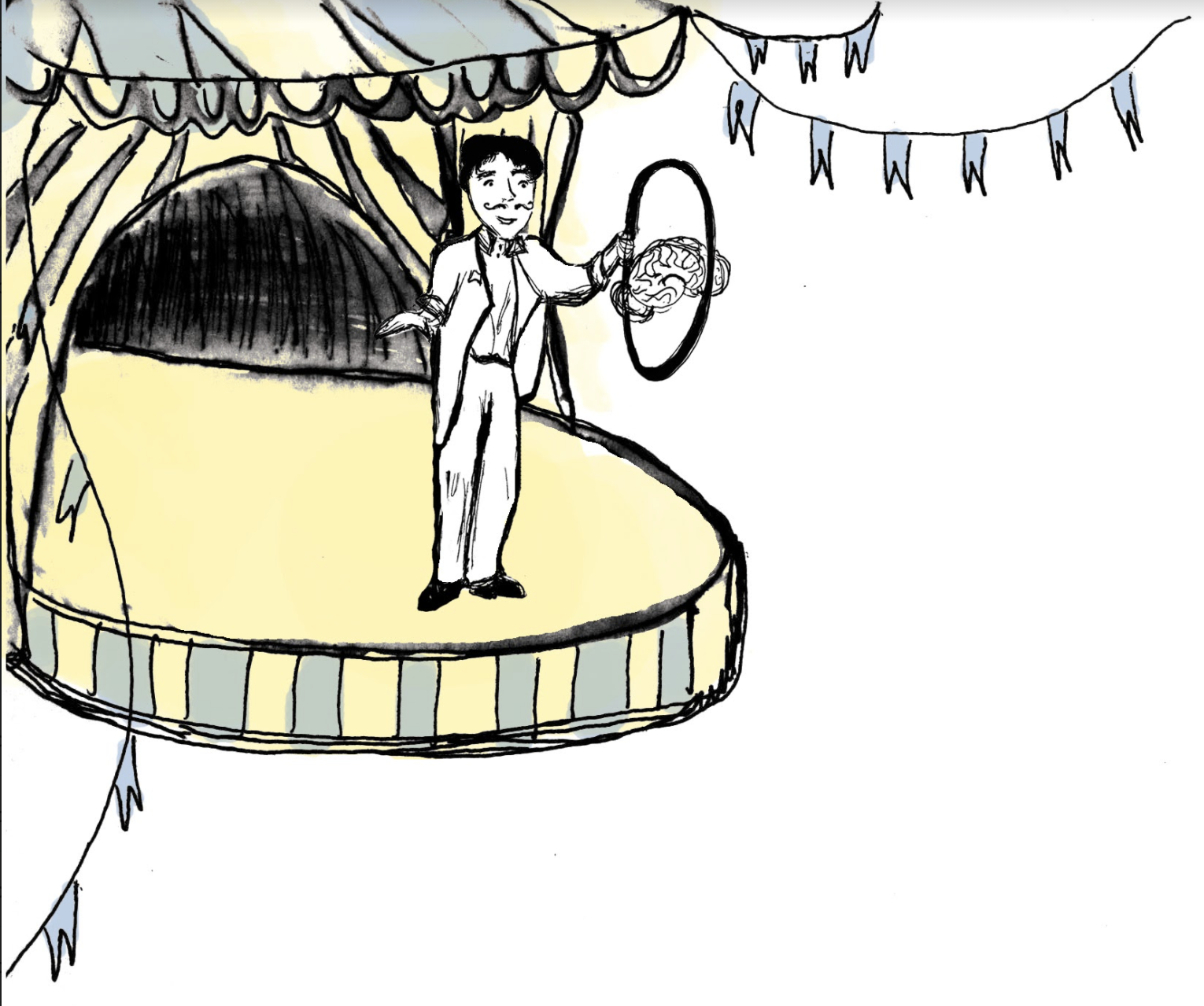Throughout history, magicians have often refused to reveal the secrets behind their trade. Veiled by centuries of occult traditions, these performers executed their tricks in front of spellbound audiences, often claiming supernatural powers with much success. However, in the late 19th century, illusionists formed an unlikely partnership with psychologists in an attempt to uncover the science behind the magical or “conjuring” arts. The rise of popular science inspired magicians to use more scientific techniques and vocabulary in their demonstrations [6]. Likewise, psychologists utilized this cooperative relationship to better understand how the mind perceives certain illusions, and their research led to many interesting scientific discoveries about human attention.
The French psychologist Alfred Binet worked with five magicians in a study that became one of the most famous cases of collaboration between science and magic [6]. Binet described his results in his 1984 book La Psychologie de la Prestidigitation, remarking that “our senses do not always tell us the truth... or rather, to say with exactitude, it is not our senses that deceive us, it is our mind” [6]. In his research, Binet described “Negative Illusions,” which occur when an individual fails to perceive an event that happens right before their eyes [6]. For example, a magician slips a card in his pocket or up his sleeve, and because the audience does not notice its disappearance, they are amazed to see it “reappear”. Negative illusions aim to distract the spectator’s attention from what their senses detect, so that they do not actually perceive the trick. One of Binet’s experiments explains this distraction-based technique, in which he used early photography equipment to take photographic plates of a particular card trick. Binet found that the trick’s method was much easier to detect without the magician’s commentary. His photos demonstrated the impact of distraction on human perception [6]. Binet, in his 1984 book, notes that “innumerous sensations make our sense organ vibrate without stop; we neglect most of them because they offer no interest; our attention is fixed only on a few, the significant sensations; only those get through our clear conscience, become the objects of our reasoning, suggest to us memories and play a role in our interior life” [6].
Years later, in 1900, the American Psychologist Norman Tripplett published his doctoral dissertation, The Psychology of Conjuring Deceptions, after observing tricks between children [12]. His central claim was that the natural “instinct” of deception is derived from evolutionary pressures that favored the ability to either playfully deceive in order to gain favor among peers or trick in order to gain leverage. The remainder of his dissertation is devoted to the various types of magic tricks and their root mechanism, whether they depend on “scientific principles”, “unusual ability”, or “use of fixed mental habits” [12]. Towards this end he considered the role of attention in magic tricks, albeit with a Darwinian context, describing the two most common ways of misdirecting attention as gesture and speech by the magician. He noted that things as simple as a tap of a wand or a description of a trick could affect the audience’s attention just enough to cover up a sneakier move. Triplett wrote, “the fixed mental habits, evolved for useful purposes, to avoid being surprised and deceived, are the very agents employed by the conjurer to this end” [12]. In this way, he explains that the very mechanisms by which we pay attention to our surroundings are taken advantage of to make magic tricks work. These mechanisms, described as active and passive attention, are still studied and researched today.
Deceiving Different Types of Attention
When magicians perform negative illusions, they manipulate their audience’s perception to effectively distract them from the mechanism of the trick. Two different methods of attention in the human brain, bottom-up and top-down, control the audience’s ability to track the performer’s sleight of hand and, if sufficiently distracted, produce the appearance of the supernatural.
The first of these methods, bottom-up control, allocates an individual’s attention toward the most salient stimulus. Illusionists take advantage of bottom-up control in a variety of ways to fool their audience. For instance, if a magician produces two stimuli at once, viewers will follow the larger stimulus of the two. The theory of gain-contrast control, in which the salience of a stimulus is decided by the surrounding stimuli contrasted with it, helps explain this phenomenon [7]. The theory of gain-contrast control states that any salient movement, whether large or fast, will in contrast make a smaller or slower movement less salient—or, in the terms of a magician, “a big move covers a small move” [7]. For example, the audience might turn their attentional spotlight to a sudden explosion of smoke on stage and miss a maneuver right in front of their eyes. If there is a substantial contrast between stimuli, neural activity will increase in the inferotemporal cortex, the hippocampus, the prefrontal cortex, and the lateral intraparietal area [7]. These areas are associated with visual processing, information storage, cognitive information processing, and attention in visual space, respectively [3][13][2][4].

Magicians also use physical misdirection to manipulate bottom-up attention, particularly when they direct the audience’s attention using hand and eye movements [5][8]. The power of hand and eye movements in attention misdirection was observed as far back as Triplett’s time, though it is still under investigation in the 21st century [12]. A recent study by Otero-Millan, Conde, and Macknick in collaboration with magician Apollo Robbins illustrated how the mere trajectory of a performer’s hand gestures through space can control the shift of the audience’s eyes and attentional focus [9]. Apollo Robbins found that when he performed tricks, he could control not only the viewer’s “attentional spotlight”, but also how long a spectator would focus on a particular object’s movement based on whether its path of movement was straight or curved. Robbins teamed up with experts to investigate this by tracking the eye movements of volunteers during a classic magic trick known as the “French Drop”, in which a coin appears to vanish. The French Drop has 4 steps:
1) Hold a coin between the thumb and index finger in the left hand. Show the coin to the audience
2) Appear to grab the coin with the right hand. While appearing to grab the coin with the right hand, actually drop the coin into the left hand.
3) Move the right hand to its original position. The audience will follow the movement of the right hand as they believe the coin has been transferred to this hand.
4) Open the right hand, revealing that the coin is not there
Immediately after the fourth step, observers usually look around to discern where the coin might actually be. The audience’s ability to locate the coin was affected when investigators varied the type of motion (curved or linear) of the right hand in step three. The researchers noted whether subjects looked back at the right hand, where the coin was hidden after the reveal, based on the shape of the right hand’s movement in order to determine if subjects were able to accurately follow the coin. The study found that its subjects were more likely to focus on the left hand for a longer period of time after curved movements than straight, linear ones, meaning that subjects were more likely to be tricked with curved motions [8]. The researchers hypothesized that straight paths invoke a certain type of eye movement known as saccades, which cause individuals to focus on the end point rather than the trajectory of a moving target. Curved motions facilitate a “smooth pursuit” that allows one’s attentional spotlight to follow the trajectory of the path more closely than the endpoint of the movement [8]. Although the perceived image is always smooth, engaging different optical systems could affect attentional focus in a variety of ways. These findings highlight the possibility that attention could vary based on the type of optical processing employed, and that attention can be manipulated through the senses. While the previous example provides an instance in which bottom-up control of attention can be manipulated to deceive an audience, magicians can take advantage of “active” attention just as effectively.

Unlike bottom-up control, top-down control turns the audience’s attentional spotlight to an object or event that they are supposed to search for on stage, thus turning their attention away from the mechanism of the trick. When executed successfully, top-down control manipulation – or manipulation of higher order expectations – causes the audience to miss an important event that the magician wants them to overlook. Magicians commonly take advantage of top-down processing through an effect called “inattentional blindness” [7]. This psychological phenomenon occurs when the magician tells his spectators to focus on a particular object or search for a particular object on the stage, shifting attention away from a separate maneuver that is completely unexpected by the observer. The same effect can arise if an audience member waits for a certain event to occur in the spotlight, yet does not notice an unexpected action by the magician such as hiding a prop. The magician directs the audience’s attention with his or her commentary when he or she shows the audience a new object on stage, talks to a volunteer, or introduces us to his or her assistant. To discern the method behind a trick, one must learn to resist the magician’s directions.
One famous example of inattentional blindness, previously discussed in Grey Matters’ Winter 2015 issue, is the selective attention test by Daniel J. Simons and Christopher F. Chabris [11]. The study, in which participants count the number of basketball passes between a group of constantly moving people, found that many observers did not notice a man dressed in a gorilla costume casually walking through the scene. They found that the ability to notice an unexpected object depended on the similarity of the object to surrounding objects as well as how involved a ‘priming task’ is. The priming task, such as counting the number of basketball passes, can be extended to following the directions of a charismatic magician. If we can miss something as large as a big furry gorilla in the middle of a game of hot potato, it seems easy to miss a quick sleight of hand by a trained magician. Bringing a spectator’s attentional spotlight away from a maneuver for a split second is enough to hide something blatant, yet attention can be manipulated by something as simple as an eye movement by the magician [8].
Magic and the Brain
It is more difficult to analyze these two forms of attention in terms of neurophysiology than in terms of psychology. Further attention-based research could help us better understand the neural basis for different types of attention. However, a recent study did find that in monkeys, the two modes of attention (top-down and bottom-up) are separate and distinct biologically [1]. The monkeys were shown a unique design on a screen for one second, then were asked to find the design among three other similar designs after a half-second delay. The researchers measured the monkeys’ reaction times as well as their neural activity through electrodes implanted in the frontal and the parietal cortices. The researchers focused on the frontal eye fields (FEF) and the lateral prefrontal cortex (LPFC) in the frontal cortex and the lateral intraparietal area (LIP) in the parietal cortex. The FEF has been theorized to play a role in rapid eye movement generation as well as attention allocation, the LPFC in processing cognitive information from sensory areas, and the LIP in attention to a location in visual space [10][9][2]. To test the effects of top-down control, researchers directed trained monkeys to search for a previously shown design on a screen among three very similar designs, so the monkey was required to search more precisely for the correct design. To test bottom-up control, however, the monkeys were asked to find the previously shown design among three other vastly differing designs. In the bottom-up case, they theorized that the monkey would be drawn to whatever design is most salient compared to its surroundings, unlike the top-up condition. The two tests resulted in increased neural activity in both the frontal and parietal cortex regions, but the initial neural activity differed temporally by the type of processing – whether top-down or bottom-up [1]. Interestingly, in the conditions that tested top-down processing, neural activity appeared first in the frontal eye fields and lateral prefrontal cortex. On the other hand, neural activity appeared first in the lateral intraparietal lobe during the bottom-up experiment. This suggests that even though the parietal cortices and prefrontal cortices are involved in attention, this research suggests that there is a distinct neurological difference.
Throughout history, magicians performed these techniques without a scientific understanding of their effects—they instead learned their tricks through secret tradition and keen observation. Yet magicians have been applying scientific principles for centuries – whether knowingly or not. Although the manipulation of attention is only a portion of the tricks in a magician’s bag, on a broader scale, performance “magic” is rooted in science. These two seemingly opposing pursuits, science and magic, are more intertwined than at first glance. So don’t let the smoke and mirrors fool you— the trick to becoming a stellar magician is becoming a more than stellar scientist. The next time you visit a magic show, be sure to pay attention; but more importantly, pay attention to how the magician wants you to pay attention.
Read more: To further understand the “art of misdirection”, check out this Ted Talk by the pickpocket master Apollo Robbins: http://www.youtube.com/watch?v=GZGY0wPAnus
References
- Buschman, T. J., and E. K. Miller. "Top-Down Versus Bottom-up Control of Attention in the Prefrontal and Posterior Parietal Cortices." Science 315.5820 (2007): 1860-2. Web.
- Goldberg, M. E., et al. "Saccades, Salience and Attention: The Role of the Lateral Intraparietal Area in Visual Behavior." Prog Brain Res 155 (2006): 157-75. Web.
- Gross, Charles G. "Visual Functions of Inferotemporal Cortex." Visual Centers in the Brain. Ed. Jung, Richard. Vol. 7 / 3 / 3 B. Handbook of Sensory Physiology: Springer Berlin Heidelberg, 1973. 451-82. Web.
- Hyman, Ray. "The Psychology of Deception." Annual Review of Psychology 40 (1989): 133-54. Annual Reviews. Web. 24 Apr. 2015.
- Kuhn, G., A. A. Amlani, and R. A. Rensink. "Towards a Science of Magic." Trends Cogn Sci 12.9 (2008): 349-54. Web.
- Lachapelle, S. "From the Stage to the Laboratory: Magicians, Psychologists, and the Science of Illusion." J Hist Behav Sci 44.4 (2008): 319-34. Web.
- Macknik, S. L., et al. "Attention and Awareness in Stage Magic: Turning Tricks into Research." Nat Rev Neurosci 9.11 (2008): 871-9. Web.
- Otero-Millan, J., et al. "Stronger Misdirection in Curved Than in Straight Motion." Front Hum Neurosci 5 (2011): 133. Web.
- Sakagami, M., and M. Watanabe. "Integration of Cognitive and Motivational Information in the Primate Lateral Prefrontal Cortex." Annals of the New York Academy of Sciences 1104.1 (2007): 89-107. Web.
- Schall, J. D. "Frontal Eye Fields." Http://www.psy.vanderbilt.edu. Vanderbilt Department of Psychology, 2009. Web. 24 Apr. 2015.
- Simons, Daniel J., and Christopher F. Chabris. "Gorillas in Our Midst: Sustained Inattentional Blindness for Dynamic Events." Perception 28.9 (1999): 1059-074. Web.
- Triplett, Norman. "The Psychology of Conjuring Deceptions." The American Journal of Psychology 11.4 (1900): 439-510. JSTOR. Web. 24 Apr. 2015.
- Zomeren, A. H. Van, and Wiebo H. Brouwer. "Chapter 3: Anatomy and Physiology of Attention." Clinical Neuropsychology of Attention. New York: Oxford UP, 1994. 43-45. Print.
